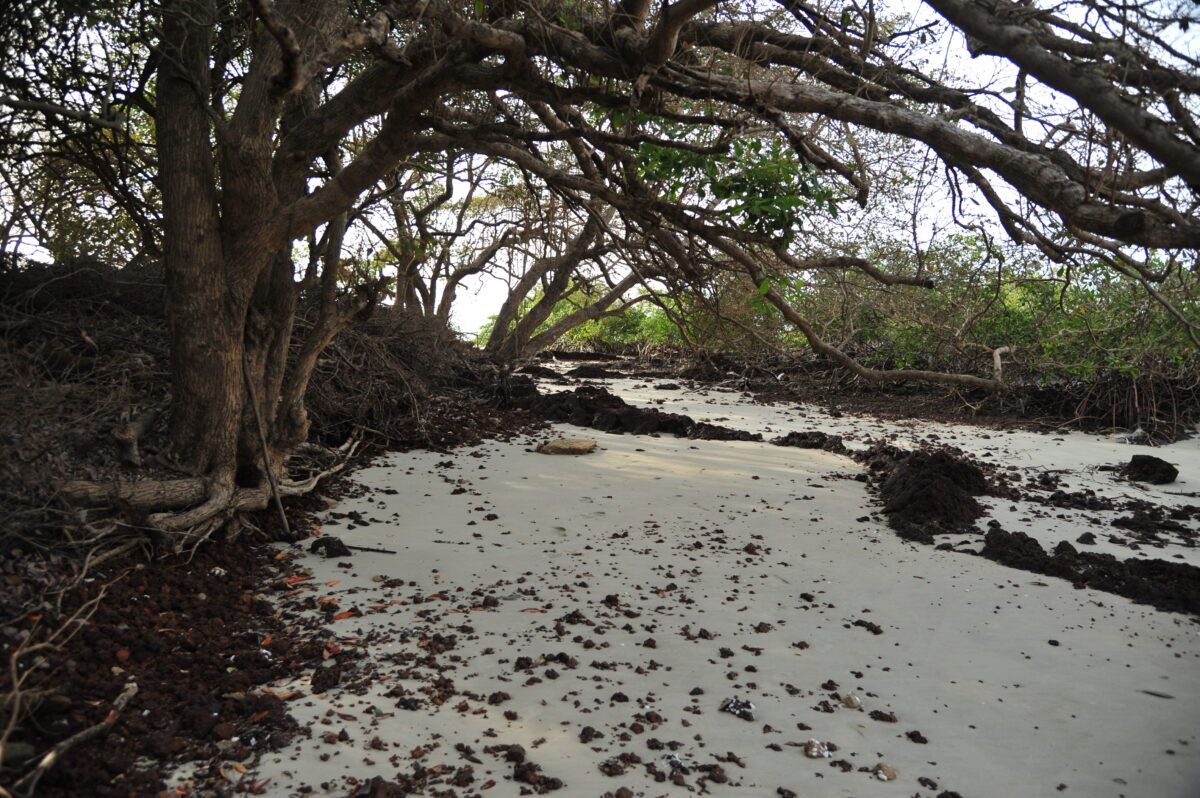The Bolama-Bijagós Archipelago Biosphere Reserve, recognized by UNESCO in 1996, is composed of 88 islands and islets located off the coast of Guinea-Bissau, in the estuary of the Corubal and Geba rivers. This reserve covers a total area of 1,046,950 hectares, being the only active deltaic archipelago on the African Atlantic coast, characterized by a vast intertidal plains and rich biodiversity.
The reserve includes three Marine Protected Areas (MPAs):
- Orango Islands National Park: Created in 2000, it covers an area of 1,582 km², including the islands of Orango, Orangozinho, Meneque, Canogo and Imbone. It is known to be home to sea hippos, sea turtles, and a diversity of birds.
- João Vieira and Poilão National Marine Park: Established in 2000, with an area of 495 km², it comprises the islands of João Vieira, Cavalo, Maio and Poilão. It stands out as one of the main nesting sites of the green turtle (Chelonia mydas) in the Atlantic.
- Urok Community Marine Protected Area: It covers the islands of Formosa, Nago and Chediã, and is managed by local communities, integrating traditional conservation practices.
The region is classified as an Ecological or Biologically Significant Area (EBSA) and Ramsar Site, recognized for its high biological productivity and habitat diversity. It is the second most important site in the world for migratory Palearctic birds, home to one of the largest populations of migratory shorebirds.
Additionally, the archipelago serves as a crucial feeding and breeding ground for critically endangered sharks and rays, which play a vital role in maintaining the ecological balance, benefiting other endangered species such as migratory shorebirds and sea turtles.
The local population, predominantly of the Bijagó ethnic group, maintains a deep relationship with the environment through cultural practices and traditions that promote the sustainable use of natural resources. However, in recent decades, this balance has been threatened by outside activities, such as illegal fishing by migrant fishermen, that flout traditional norms. Despite the ban on fishing for sharks and rays, these species continue to be caught in large quantities.
“Blue Bijagós” Project
Goals:
- Effective Management of MPAs: Implement sustainable management strategies to protect marine resources and ensure biodiversity conservation.
- Creation of New Community MPAs: Establish a community Marine Protected Area on the islands of Unhocomo and Unhocomozinho, recognized as sanctuaries for juvenile sea turtles and connectivity corridors between existing MPAs.
- Improving Livelihoods: Developing employment and income generation opportunities, especially for women and youth, in target communities, aiming to reducing isolation and poverty.
Project Intervention Zones:
Marine Protected Areas of the Bijagós Archipelago, including the existing MPAs and the proposal for a new community MPA in Unhocomo and Unhocomozinho.

